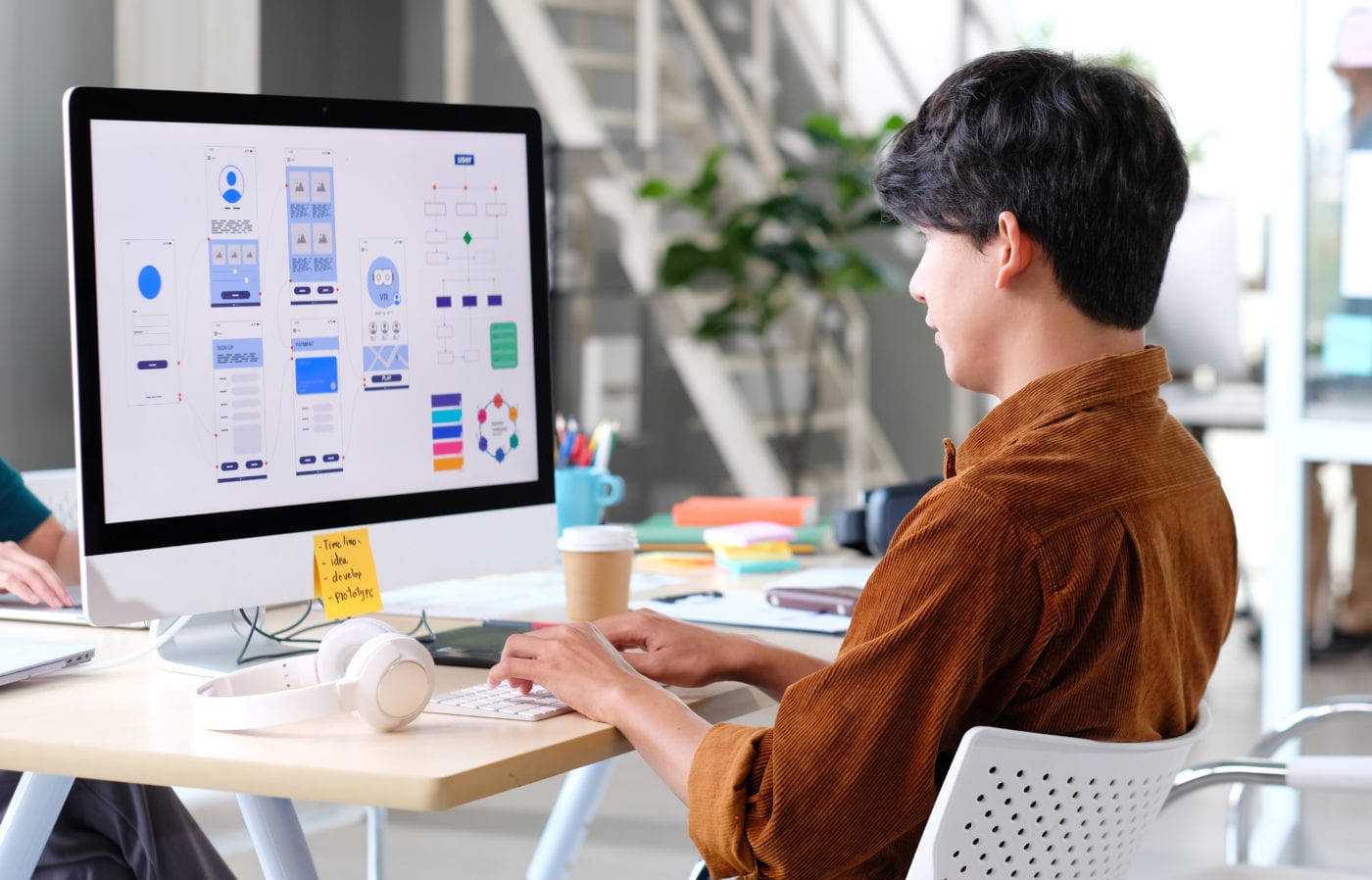What is Digital Design and Why is it Important?

Digital design, UX design, UI design, graphic design…for the laypeople among us, all of these terms are enough to make your head swirl (hint hint: it might be because they’re all related).
Recently, we spilled the tea on UX and UI design (and even covered the differences and similarities they share with graphic design). Now, we’re explaining the field of digital design and sharing all the reasons it plays an important role in the digital world.
Today, we’re digging deeper into the following questions:
- What is digital design?
- What do digital designers create?
- Why is digital design important?
- What’s the difference between digital design and other types of design work?
Buckle up and get ready to learn about digital design and all the ways it helps make our digital lives easy, breezy, and beautiful.
What is digital design?
First things first: digital design spans several forms, but it’s essentially design work made for digital spaces. To keep it simple, digital design is content created for and viewed on a digital screen. You might be thinking, “Hey, this sounds really broad.” And you’d be correct. Digital design is a broad field and is often used as an umbrella term to describe several types of design work including UX/UI design, graphic design, and web design (more on this below).
Within the world of design, there are those who work in the physical world creating print designs and those who work in the digital world creating digital designs. Here’s an even further breakdown:
Print projects include magazines, brochures, business cards, print ads, book covers, and other design work you’d find in the physical world. Conversely, digital designs include deliverables you’d find on the web and other digital platforms.
What do digital designers create?
Digital designers create design deliverables that live on digital platforms like websites or applications. Some of these deliverables include things like:
- PDF graphics for content like white papers or reports
- Website graphics and layouts
- Interactive elements like buttons
- Infographics
- Wireframes and prototypes
- Digital ads
Tracking the success of digital design through analytics
Digital design tracks its success through analytics. This sets it apart from print design and gives it a leg up as designers can track how many eyes are on their designs through things like engagement (likes, comments) and page views. A digital designer may create several variations of a design and monitor its success through the use of analytics. They may conduct A/B testing with the different design variations to see which variation users best respond to. This can be especially helpful for companies using their digital designs to help advertise or sell a product or service.
Interactivity and digital design
A major way digital design differs from print design is that it can be, and often is, interactive. Interactivity means the digital design can respond to you (the user) and serves a functional purpose. For example, a checkout button on an online store can be clicked on to initiate a purchase process. This feature would be considered interactive. It’s important to note here that not all forms of digital design are interactive, some graphics like logos or infographics can simply serve the purpose of branding or telling a story.
Which careers fall under digital design?
You might be thinking, “Ok. I think I get it. But, what’s the difference between digital design and other types of design work?” Like we said, digital design encompasses several forms of design work. This news is especially exciting for people who are interested in working in the field because different strengths can be used across the medium. Thus, the job prospects are plentiful. Here are a few career options for those interested in digital design.
Graphic Designers
Graphic Designers work to create cohesive branding through the use of visual elements. They often create fixed images rather than interactive ones. One thing to remember is Graphic Designers also work in the print world. They produce deliverables like banner ads, logos, business cards, infographics, and digital illustrations.
UX/UI Designers
UX and UI Designers work together to create intuitive, beautiful, and functional mobile apps, websites, and products. User Interface Designers work specifically to make digital interfaces enjoyable and easy-to-use through the use of aesthetics. User Experience Designers, however, ensure users have the best experience throughout their entire journey using a product, app, or website. Like Graphic Designers, UX Designers can also work in physical spaces but you’ll mostly hear about them working in the digital world these days. UI design is a strictly digital practice. Oftentimes, these roles are merged into one.
Web Designers
Web Designers offer design services specifically catered to the web. They create layouts and web pages, merging the work of a graphic designer with coding. The end result is an accessible, aesthetically pleasing, and easy-to-use website.
Why is digital design important?
Our lives are largely online in 2020, so the design of our online
interactions
is hugely important. Digital design affects the way we
work, learn, shop, and socialize. Think of it this way: elements of digital design affect
our purchasing decisions. When we shop online, we rely on the website to direct us (through
design) to the pair of shoes we’re looking for. The usability of the site, the navigation,
and the checkout button were all thoughtfully created by a digital designer (probably a UX
and UI Designer in this case).
Digital design ensures we have useful experiences in the online world. It can be especially important for business owners who need aesthetically pleasing designs to attract and retain customers. For students who are largely going to school online right now, it’s important that their digital educational tools are easy to understand and navigate so they can be successful in their studies. The same goes for workers who use digital tools in their day-to-day lives: from communications to file sharing, an effective interface can make our jobs easier.